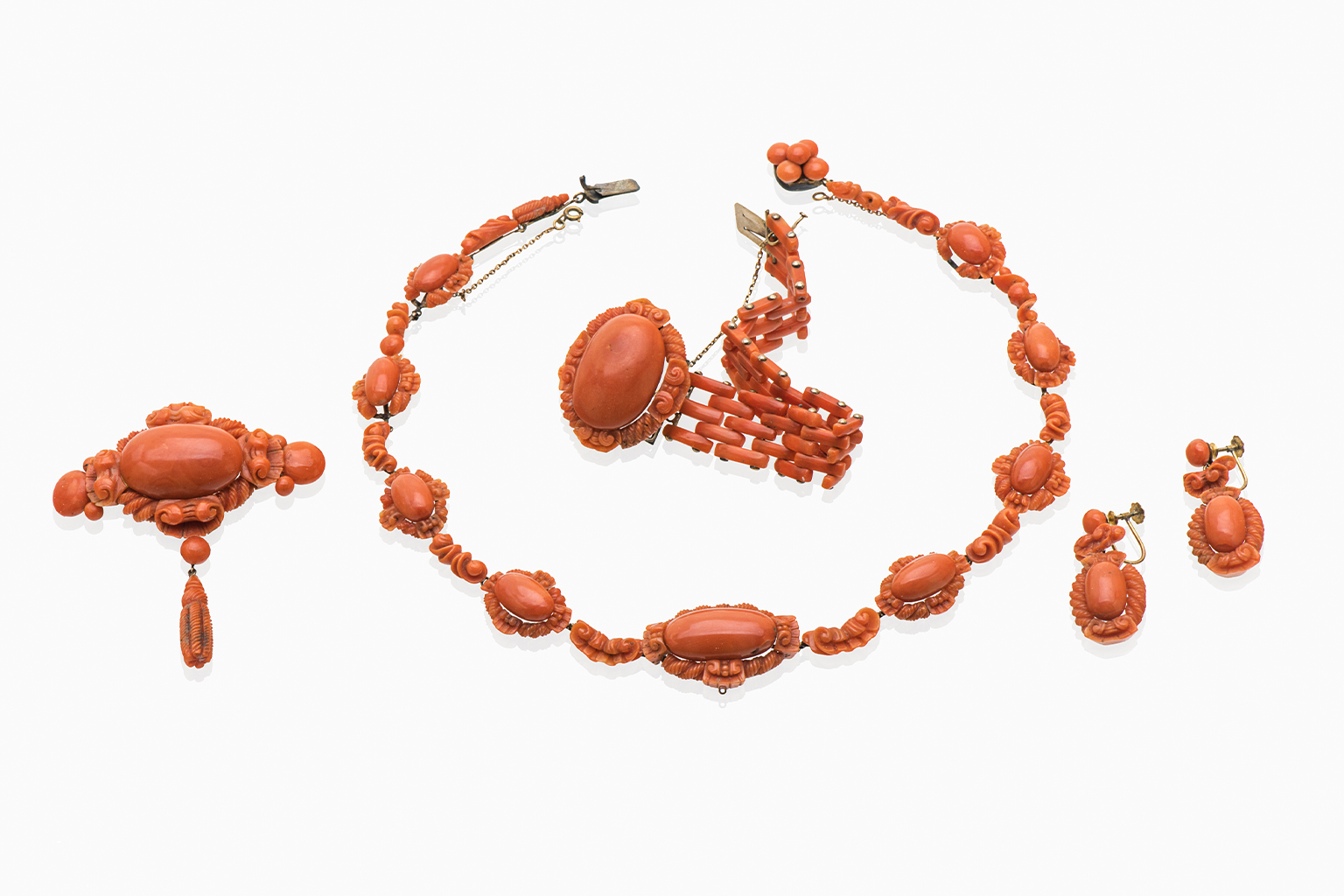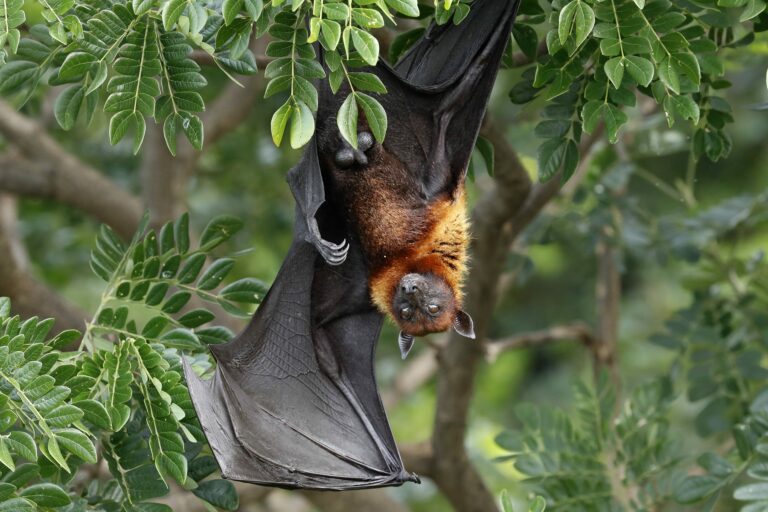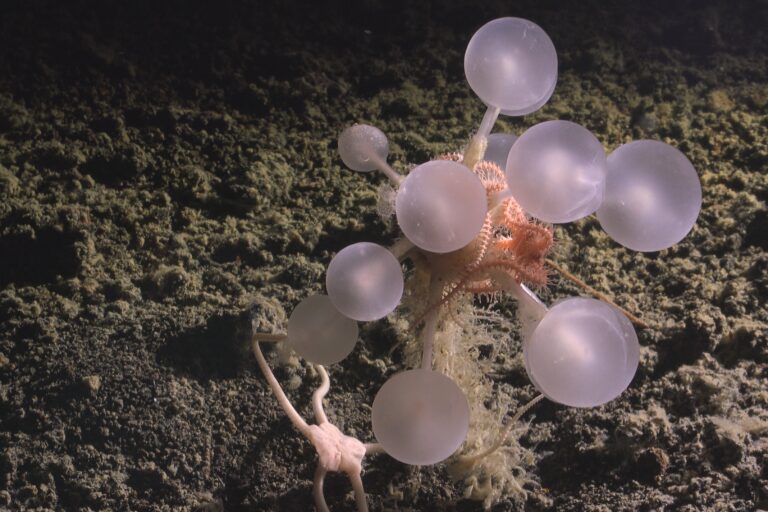- There’s a brisk illegal trade in precious red corals, from the family Coralliidae, but law enforcement currently has a difficult time telling commonly traded taxa apart.
- Demand for the corals for use in jewelry and decorative objects has depleted certain populations of these ecosystem engineers.
- Scientists recently developed a new DNA test that could help determine whether a coral object belongs to a taxon that’s subject to international trade regulations.
- They express hope that the new method will “contribute to better control of international trade” and inform buyers about the species they purchase.
In a sterile room, Bertalan Lendvay wields an electric drill that flicks off tiny flakes of precious coral skeletons. Lendvay, a research associate at the University of Zurich’s Institute of Forensic Medicine in Switzerland, routinely works for the police in human crime scenes. But he has spent the last four years tinkering with a way to use his expertise to help law enforcement catch smugglers illicitly trying to cash in on a legal coral trade worth hundreds of millions of dollars per year.
Precious corals, also known as red corals, are colonies of sea creatures related to jellyfish whose communal skeleton looks like a shrunken tree stripped of its leaves and colored from salmon pink to deep vermilion. The deeper their crimson blush, the more cash they bring in for sellers.
Eight precious coral species within the family Coralliidae are most commonly found in the international trade. Four are listed under Appendix III of CITES, the global wildlife trade convention, which requires that internationally traded items carry export documents affirming they were legally obtained; four aren’t listed at all. But here’s the crux for law enforcement: certain CITES-listed and unlisted species of precious red coral are nearly identical in color, especially after they’ve been polished into a bead or carved into a figurine. Law enforcement can’t tell them apart.

Lendvay and several colleagues developed a new DNA test called Coral-ID that could help change that. Their study outlining the new method was published in the May issue of the journal Forensic Science International: Genetics.
For the study, Lendvay’s team tested Coral-ID on 20 precious coral items seized by customs authorities during their import into Switzerland between 2009 and 2017. They drilled into the bottom of the objects or into existing holes to inconspicuously collect a few milligrams of coral material. Then they used a technique originally developed for studying ancient bones to extract the coral’s genetic information from the material, pinpointing one specific gene in the mitochondrial DNA called mtMutS.
Lendvay and his colleagues showed that mtMutS can serve as a genetic barcode; they identified differences in its sequence unique to six distinct taxonomic groups within the Coralliidae family. Using mtMutS, Coral-ID identified the taxonomic group of 13 of the 20 objects. For six objects with CITES documentation, Coral-ID identified a different taxon than the one listed by the importer. The remaining seven unidentified objects were either too old or yielded specimens that were too contaminated to be analyzed.
“The results are clear-cut,” Lendvay told Mongabay. “I hope this method will contribute to better control of international trade and companies will become aware of what materials they are using.”

Red coral hotspots are located in the west and central Pacific Ocean, including the seas of New Caledonia, Taiwan, Japan and the Hawaiian Islands, as well as in the Mediterranean Sea and the Atlantic Ocean. The international trade in coral — the “Coral Road” — goes back all the way to the beginning of the 1st millennium, when people prized red coral because they believed it had powerful sacred properties. The Romans hung coral branches around children’s necks to stave off danger, and the Egyptians decorated pharaohs’ tombs with them. Early Christians believed red coral symbolized the blood of Christ. In Iran, people believed coral amulets defended ships against raging storms. In Buddhism, precious coral embellished religious statues.
Red corals swiftly became an iconic symbol of protection — an association that ironically has slashed their numbers. The IUCN, the global conservation authority, lists one species, Corallium rubrum, as endangered. And according to the U.S. National Oceanic and Atmospheric Administration, “known commercial beds of Corallium have declined to less than 20-30% of their historic baseline.” The industry is often described as “boom and bust” because coral populations, once discovered, are briskly depleted. Intensive harvesting has the knock-on effects of draining coral populations of their genetic diversity and their large, mature colonies, leaving only small, immature colonies standing. The colonies grow so slowly — at a rate of 1 millimeter in diameter per year — that there’s no feasible way to cultivate them commercially.
Nowadays, red coral jewelry has lost its religious shine, but not its cachet, with high-quality specimens going for $10,000 per kilogram (about $4,500 a pound). Customs authorities, mainly in the U.S., confiscated around 67,400 pieces of precious coral weighing a total of 870 kg (1,918 lbs) between 2008 and 2015, according to a report on the CITES Trade Database by the U.N.’s Food and Agriculture Organization. But that likely doesn’t reflect all of the illegally traded specimens, much less those illegally harvested.
In 2007, a year before the four precious coral species were added to Appendix III of CITES, the U.S. had lobbied to add the entire Corallium genus to Appendix II, which would have imposed even greater restrictions on trade. That proposal almost made it through, but its opponents won out, the loudest of them arguing that precious coral species are too difficult to tell apart.

This is where Coral-ID comes in.
“This type of DNA testing is critical for several reasons,” Mary Burnham Curtis, forensic science branch chief and genetics unit supervisor at the U.S. National Fish and Wildlife Forensic Laboratory in Ashland, Oregon, told Mongabay.
“One reason, of course, is to identify the protected species that show up in trade illegally. Another is the idea of monitoring what is showing up in the trade so that resource managers can get information about the species that are present in the trade, temporal changes in species diversity, and changes in the abundance of different species that may be indicators of potential overexploitation,” Burnham Curtis, who was not involved in the study, said.
However, the method does have limitations. Coral-ID isn’t specific enough to narrow down a seized item’s identity to the species level in all cases. For example, it can genetically distinguish C. rubrum (not CITES-listed) from the other species of the genus, but it can’t tell C. japonicum (CITES-listed) from C. nix or C. tortuosum (neither of them CITES-listed).
“Coral-ID is a useful tool, but it’s not magic,” said Lorenzo Bramanti, a marine scientist at the French National Centre for Scientific Research (CNRS) who was not involved in the study.
“It’s a weapon to add to the fight against illegal trafficking.”
But Bramanti said he thinks other interventions could be more effective than enforcing international trade restrictions. He called for more protections for coral habitats. Precious corals are ecosystem engineers, forming what Bramanti called “animal forests” that significantly enhance a habitat’s ecological functioning. To restore populations of precious corals requires more than just regulating their trade, according to Bramanti. It also calls for protecting their homelands.
Banner image: A bracelet with figurines carved from highly prized red coral. Image by Walters Art Museum via Wikimedia Commons (CC BY-SA 3.0).
Citations:
Bruckner, A.W., & Roberts, G. G. (Eds.) (2009). Proceedings of the first international workshop on Corallium science, management, and trade. Retrieved from NOAA website: https://repository.library.noaa.gov/view/noaa/523/noaa_523_DS1.pdf
Cannas, R., Follesa, M.C., Cau, Alessandro, Cau, Angelo, & Friedman, K. (2019) Global report on the biology, fishery and trade of precious corals. Retrieved from Food and Agriculture Organization website: https://www.fao.org/documents/card/en/c/ca5643en/
Lendvay, B., Cartier, L. E., Costantini, F., Iwasaki, N., Everett, M. V., Krzemnicki, M. S., … Morf, N. V. (2022). Coral-ID: A forensically validated genetic test to identify precious coral material and its application to objects seized from illegal traffic. Forensic Science International: Genetics, 58, 102663. doi:10.1016/j.fsigen.2022.102663
Lendvay, B., Cartier, L. E., Gysi, M., Meyer, J. B., Krzemnicki, M. S., Kratzer, A., & Morf, N. V. (2020). DNA fingerprinting: An effective tool for taxonomic identification of precious corals in jewelry. Scientific Reports, 10(1). doi:10.1038/s41598-020-64582-4
Rossi, S., Bramanti, L., Gori, A., & Orejas, C. (Eds.). (2017). Marine animal forests: the ecology of benthic biodiversity hotspots (pp. 1-1366). Cham: Springer International Publishing.
Shiraishi, H. (2010). Seeing red: Precious coral trade in East Asia. Retrieved from TRAFFIC website: https://www.traffic.org/publications/reports/seeing-red/
Tsounis, G., Rossi, S., Grigg, R., Santangelo, G., Bramanti, L., & Gili, J. (2010). The exploitation and conservation of precious corals. Oceanography and Marine Biology, 161-212. doi:10.1201/ebk1439821169-3
FEEDBACK: Use this form to send a message to the editor of this post. If you want to post a public comment, you can do that at the bottom of the page.













